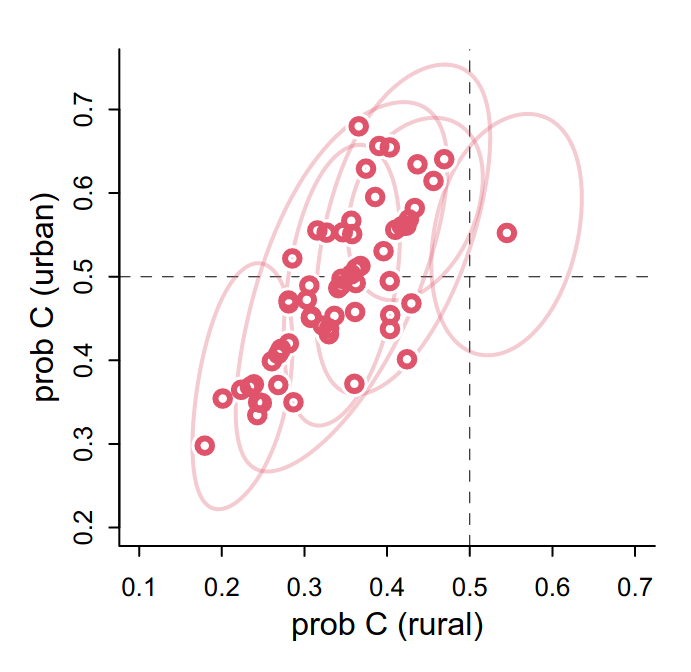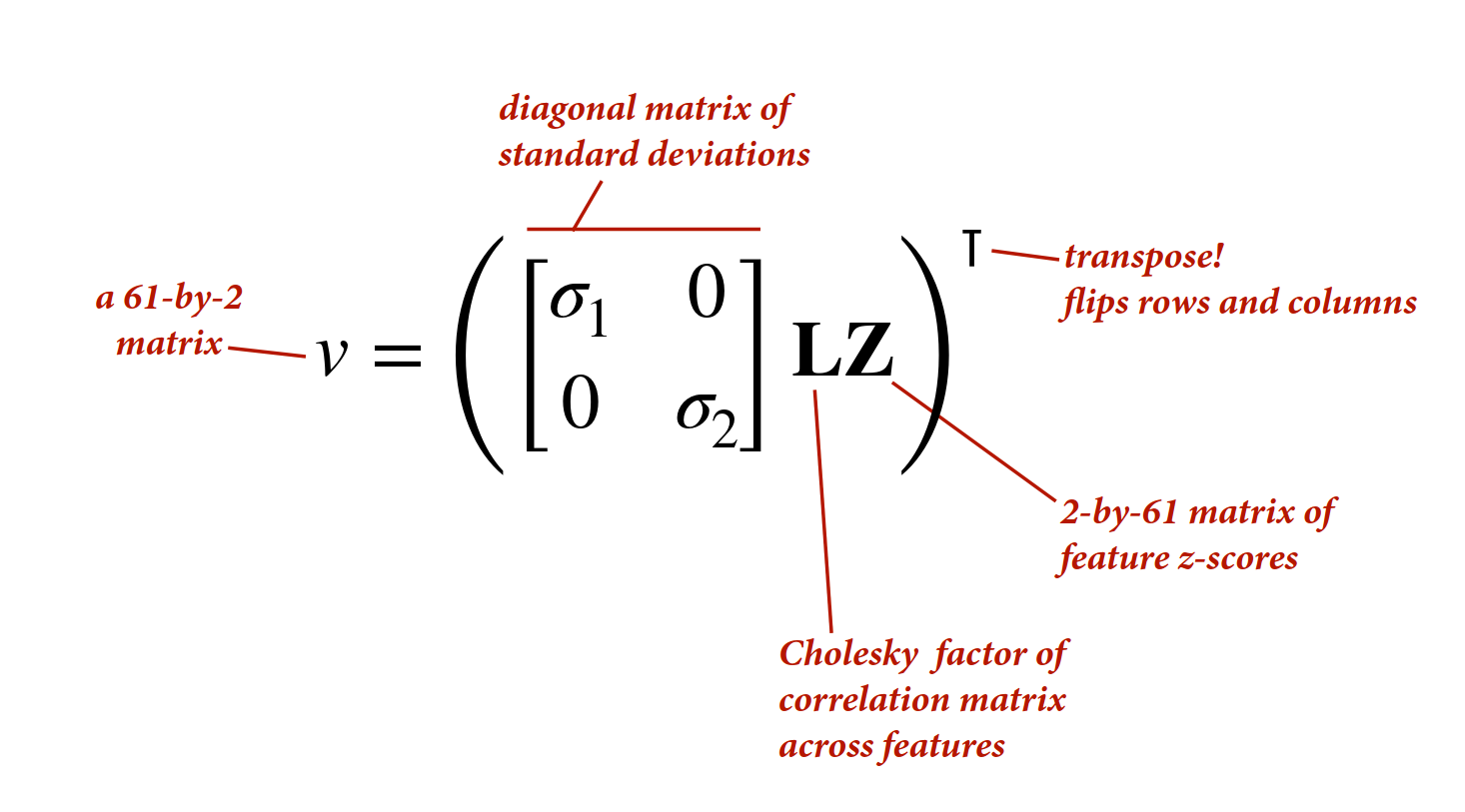alpha_bar <- 0
beta_bar <- 10
mu <- c(alpha_bar, beta_bar)
rho <- -0.8
R <- matrix(c(1, rho, rho, 1), 2, 2)
n <- 100
mvnorm_prior <- rmvnorm(n, mu, sigma = R)
ggplot(data.frame(mvnorm_prior), aes(X1, X2)) +
geom_point() +
stat_ellipse(level = .89) +
labs(x = 'alpha', y = 'beta') +
theme_bw()




